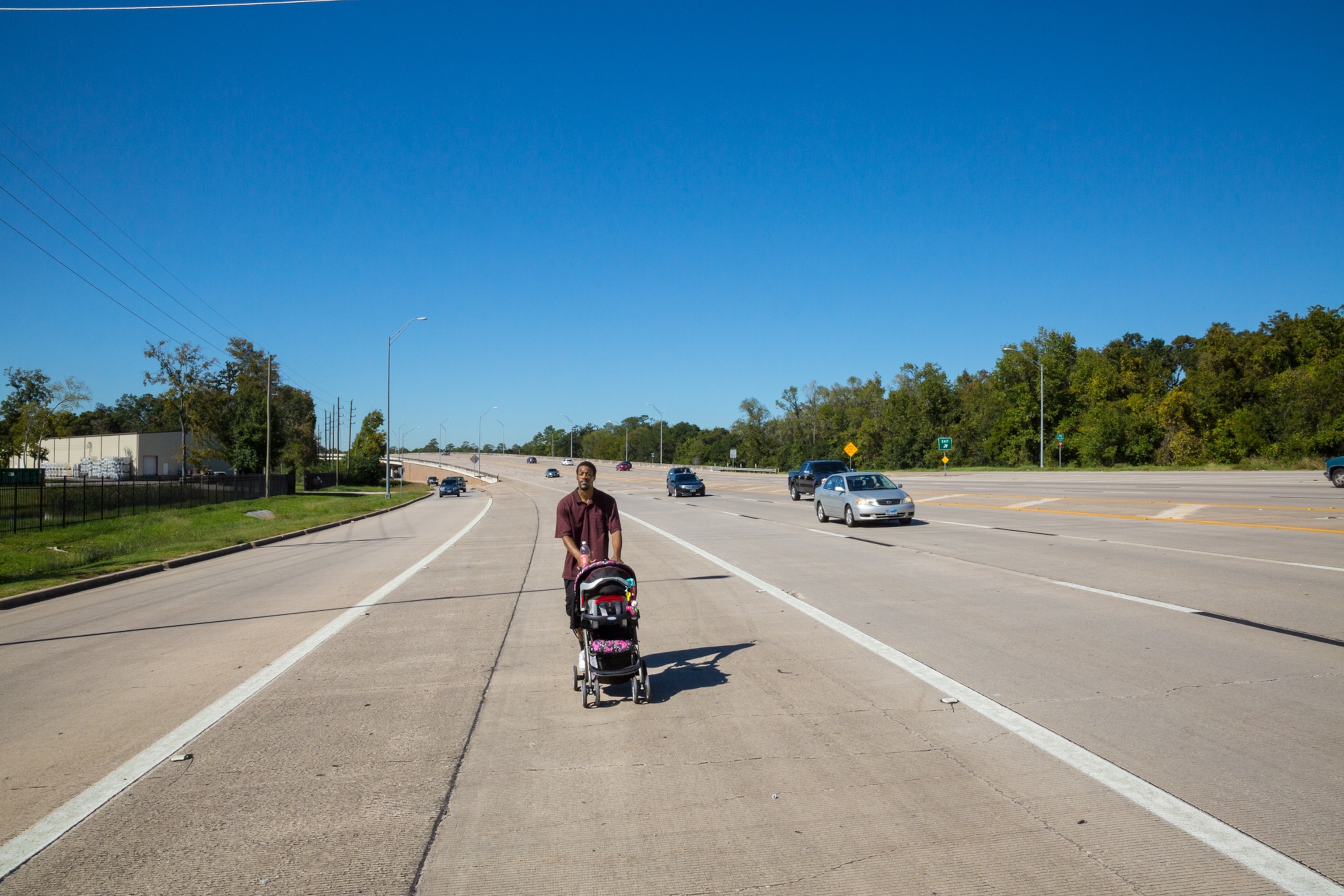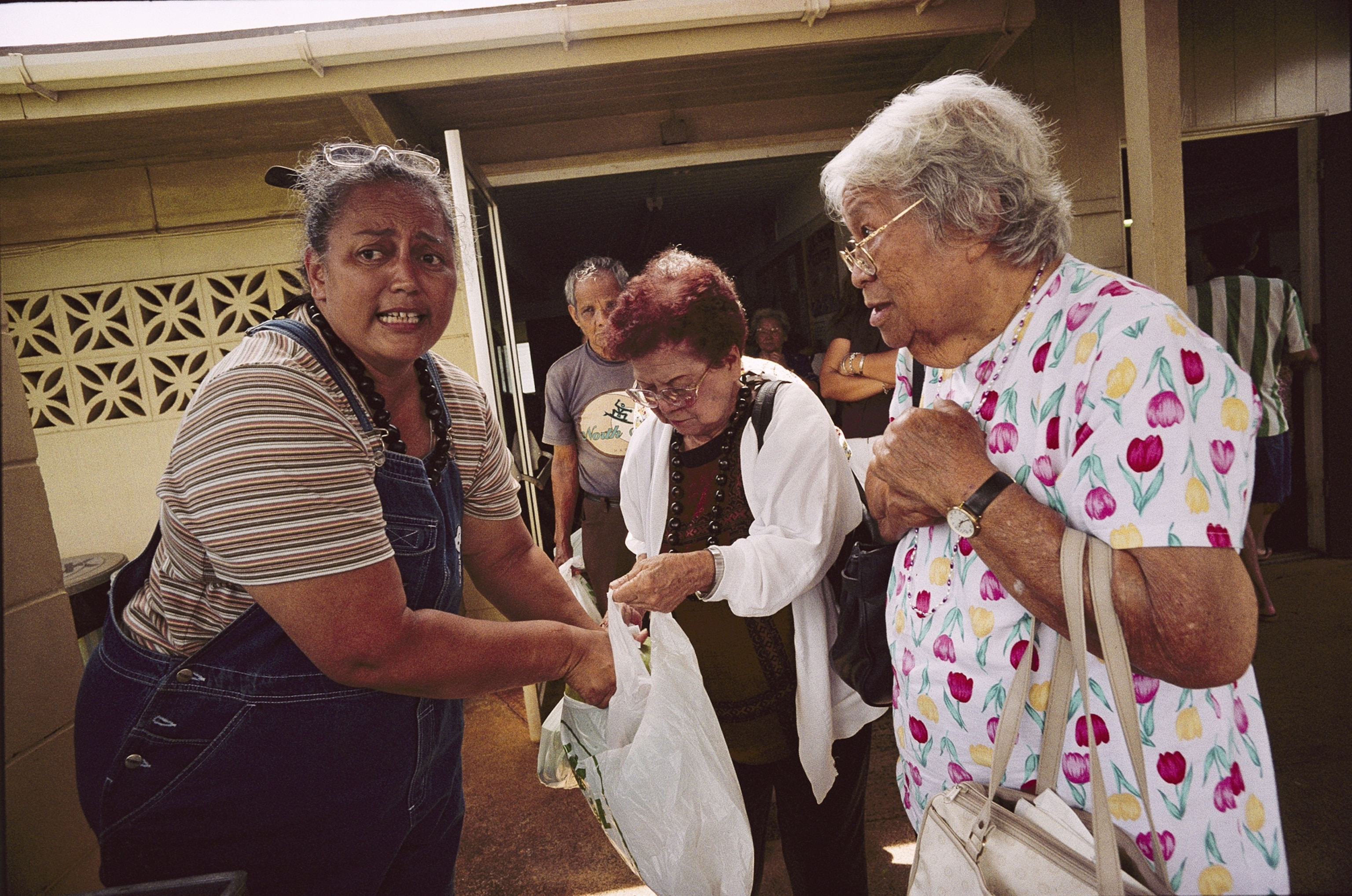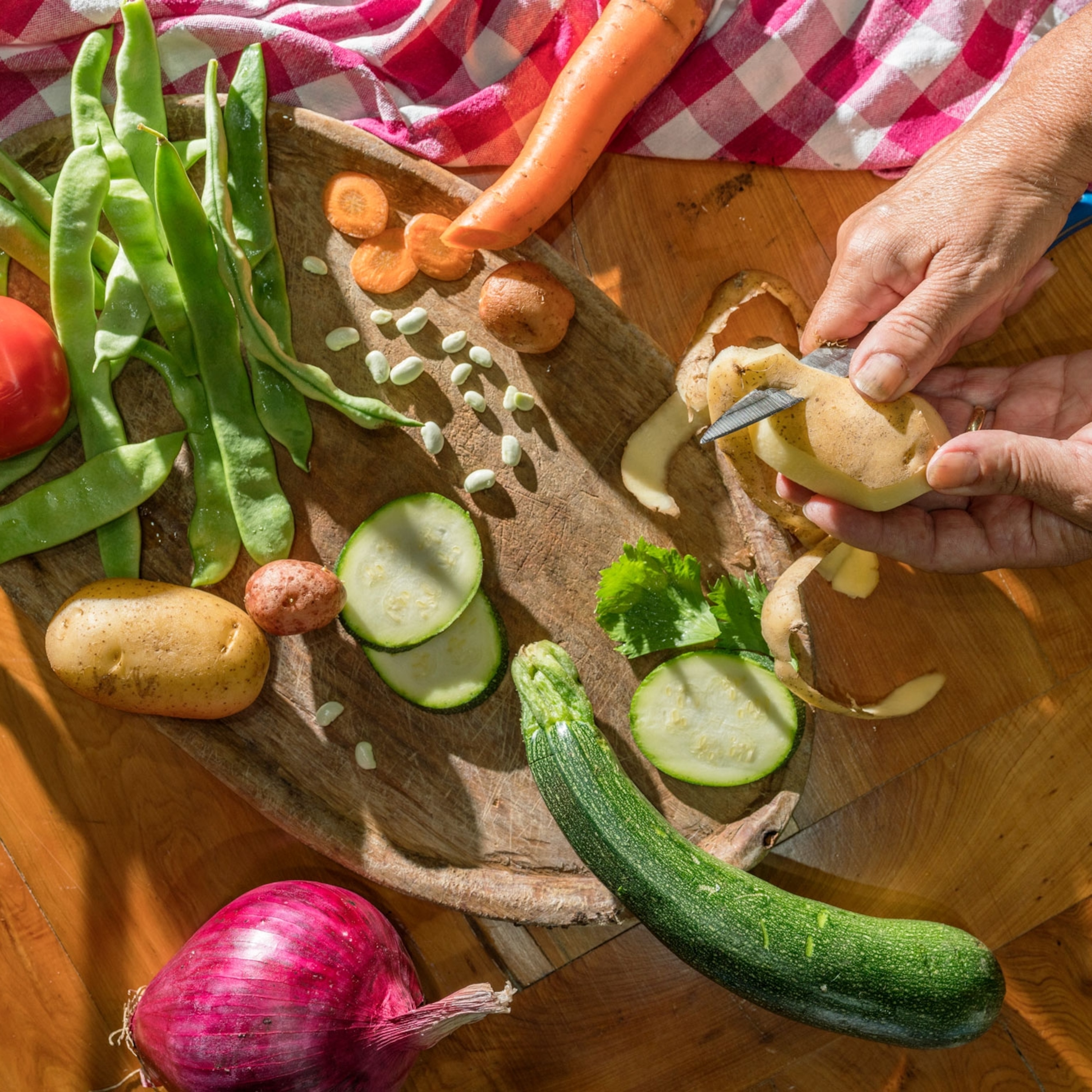
Study Sheds Light on Broadening U.S. Hunger Problem
In daily scramble for food, about 1 in 7 Americans now rely on local aid programs.
Dusti Ridge leans on her cane and waits patiently for her number to be called at Bread for the City, a food bank in southeast Washington, D.C. When she hears "56," she steps into the nonprofit group's pantry to find out what she'll be eating for the next week.
Kale, green peppers, yellow tomatoes, and dried cherries—perfect for a favorite brown rice recipe—go into her shopping bag. So does a whole chicken. But she passes on canned green beans; too much salt, she says.
Ridge, 62, has been coming to the food bank once a month for more than a decade, and takes pride in choosing "exotic" foods that some of the charity's clients avoid—like the venison that was donated recently after deer in a local park were culled.
Ridge is typical of millions of Americans who rely on food banks to survive: She is in poor health and lives on disability payments as she undergoes chemotherapy treatments for ovarian cancer. But as a nationwide study released Monday by the nonprofit group Feeding America makes clear, the number of people who rely on food pantries, soup kitchens, school lunch programs, senior citizens' Meals on Wheels deliveries, or other food initiatives to supplement their daily diet is a complex and growing mosaic that cuts across the nation's demographic lines.
About one in seven Americans—more than 46 million people—rely on such programs to get by, according to the study, which involved confidential surveys of more than 60,000 recipients of food aid from groups affiliated with Feeding America, a network of 200 food banks that distribute donated food to programs in all 50 states.
The ranks of the hungry include 12 million children and 7 million seniors, plus millions more among the working poor, military families, the unemployed, and young college graduates. Those in each group said their reliance on food aid stemmed from a daily struggle to put healthy and nutritious food on the table when all that many can afford is inexpensive processed food that fuels a cycle of chronic diseases such as diabetes, hypertension, and obesity.

The study, called Hunger in America 2014, comes nearly a year after the U.S. government reported that a record number of low-income Americans—more than 47 million—were receiving food stamps through the Supplemental Nutrition Assistance Program (SNAP). The study by Feeding America found that just 55 percent of those who get aid from its affiliated programs also received food stamps. One in five said they had never applied to the federal food stamp program because they believed they wouldn't be eligible for such help.
The study's suggestion that perhaps 20 million or so people are receiving local food aid but are not getting federal food stamps indicates that the scope of America's hunger problem is likely well beyond the enrollment figures reported by any one aid program—and could touch about one-fifth of the nation's population.
"Feeding America is feeding more people than ever before," said Maura Daly, a spokeswoman for the group. "The public-private partnership in addressing hunger in America is essential."

A "Vulnerable Population"
The number of households the U.S. government considers "food insecure," meaning they don't always have enough to eat, was 17.6 million, or 14.5 percent, in 2012. Among those whose hunger leads them to the nearly 100,000 food pantries, meal programs, and other food agencies in the Feeding America network, 84 percent said they suffer from food insecurity.
Such households "have a particularly vulnerable population," said Caroline Ratcliffe, a senior fellow at the Urban Institute, a Washington think tank, who was not involved with the survey.
The Feeding America survey's findings are in line with those in a recent National Geographic report, "The New Face of Hunger." Feeding America's survey found that many Americans seek food assistance on "an ongoing basis, reflecting persistent need." It also provides a snapshot of those who seek aid from food banks and other local programs across the nation:
● Forty-three percent are white, 26 percent are African American and 20 percent are Latino. Nearly one in four households reported being multiracial, a reflection of the nation's increasing diversity. One in ten white households seek out food supplements, but those with minorities are much more likely to need assistance, the study found. It said that one in four African American and one in six Latino households in the United States were served by community food programs.
● One in five of the adults receiving aid from local food programs said they had attended college; nearly 6 percent reported having a four-year degree or higher education.
● More than half of those surveyed were considered to be among the "working poor," meaning their wages were not enough to lift them out of poverty. About 54 percent reported someone in their household had a job. But in most of those households, the longest-employed person worked only part time. About 72 percent of the households surveyed reported living at or below the federal poverty line, which in 2014 is an annual income of $23,850 for a family of four.
● 620,000 households, or 4 percent of those getting food assistance, include someone serving in the military. When veterans are added, more than one in four military households suffer food insecurity, the study said.
● 79 percent of those in households receiving food aid said they bought the cheapest food available, even though they knew it wasn't always the healthiest.







